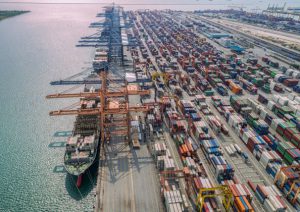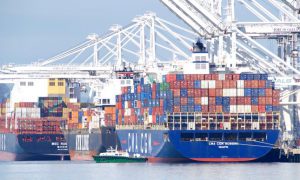Transportation Chaos
Operating Amidst a Historic Disruption in Global Trade
A customer from Dubai called last November in a panic. Out of stock, he appealed to me personally to see if we could turn around a containerload order quickly. I called the president of our manufacturer client, based in California, who committed to producing the order in four weeks. Our customer was relieved.
Two weeks later, the manufacturer advised that there would be a 90-day production delay due to unexpectedly long lead time on a critical component part. When we advised our customer in Dubai, he panicked; he needed us to find a solution. Fortunately, we located in our warehouse a small quantity of the products he needed and airfreighted them to him within the week. He reluctantly agreed to wait another ten weeks for the rest of the order to ship.
But much to our customer’s frustration, the 90-day delay extended to 120 days. Finally, in late February, we were advised that the order was built and available for pick-up. Our traffic team immediately began working with the customer’s forwarder to identify a steamship bound for Dubai and a trucker that could secure a container for the load. But this was not business as usual. The forwarder’s trucker could not locate a container—there were simply none available—and we missed the sailing. The next sailing was a least three weeks out. The factory president I first spoke to in November called to complain that the order is now crowding his loading dock and he needed to get paid. And, of course, our customer is incensed. Today, three weeks later, we’re still searching for a secure transport booking.
Ever since demand for products began to return in the second half of last year, stories like this have become frustratingly commonplace. As explained in a March 7 New York Times article headlined ‘I’ve Never Seen Anything Like This’: Chaos Strikes Global Shipping”, they are part of a global trade phenomenon: heightened demand amidst a shortage of space on steamship vessels and cargo planes and fewer available truckers and cargo containers.
A number of factors have contributed to the current state of affairs. While the pandemic cut back spending on services such as travel, hotels, and dining, demand spiked for products people purchased for their homes. Many of these products are imports from China. The resulting surge in China exports overwhelmed the steamship industry. There are simply not enough steamships and cargo containers to keep pace with demand. Compounding matters for U.S. suppliers, who depend heavily on imported parts and materials, California ports, which according to a recent Wall Street Journal article are responsible for more than a third of all U.S. imports, have been dogged by severe congestion since last summer. The result has been higher prices for goods and transport services and unprecedented manufacturing and shipping delays.
So what are those of us in the business of manufacturing or distribution to do?
When I posed this question recently to Dorian Drake’s traffic manager, Nydian Suarez, she responded with one word: “Pre-book.” By this, of course, she meant that when planning a cargo movement, we must secure a firm availability date from the manufacturer and immediately target a steamship sailing or cargo flight and locate a trucker, who in turn can arrange pick-up and delivery to the port. Booking freight in advance, Nydian explained, is standard practice for her department, but the need to pre-book now has taken on heightened importance.
Many of our manufacturer clients face similar challenges (one recently sent us a force majeure notice from one of their suppliers), which is why many manufacturers’ lead times that previously were, say, four weeks, are now 10 weeks, 12 weeks, or more. Worse yet, some manufacturers simply cannot commit to an availability date at all.
 The other part of this equation, of course, resides with the importers we work with around the world. More than a few of these importers prefer to wait until their order is ready to be collected before searching for and selecting a freight forwarder. While normally nominating a forwarder late in the production process—never a good practice—might lead to a delay of a week or two, in the current environment it might result in a delay of a month or more, resulting in the kind collective mess we described with our order from Dubai. And then there are the orders that are contingent upon a full or partial payment prior to shipment, which, if not made timely, could again lead to unusually long, costly delays. To avoid delays, importers are wise to nominate forwarders early in the process and plan to meet their prepayment commitments on time. They might be wise also to plan their purchases further in advance and plan to hold more stock.
The other part of this equation, of course, resides with the importers we work with around the world. More than a few of these importers prefer to wait until their order is ready to be collected before searching for and selecting a freight forwarder. While normally nominating a forwarder late in the production process—never a good practice—might lead to a delay of a week or two, in the current environment it might result in a delay of a month or more, resulting in the kind collective mess we described with our order from Dubai. And then there are the orders that are contingent upon a full or partial payment prior to shipment, which, if not made timely, could again lead to unusually long, costly delays. To avoid delays, importers are wise to nominate forwarders early in the process and plan to meet their prepayment commitments on time. They might be wise also to plan their purchases further in advance and plan to hold more stock.
Other than planning ahead, perhaps the most important thing we can all do right now is be brutally honest about delivery expectations and understanding and responsive when things don’t go as planned. We might as well get used to this. Industry experts believe it could be many months before global trade returns to what it was before Covid-19.
Ed Dorian Jr.
Riverside, CT
March 21, 2021





